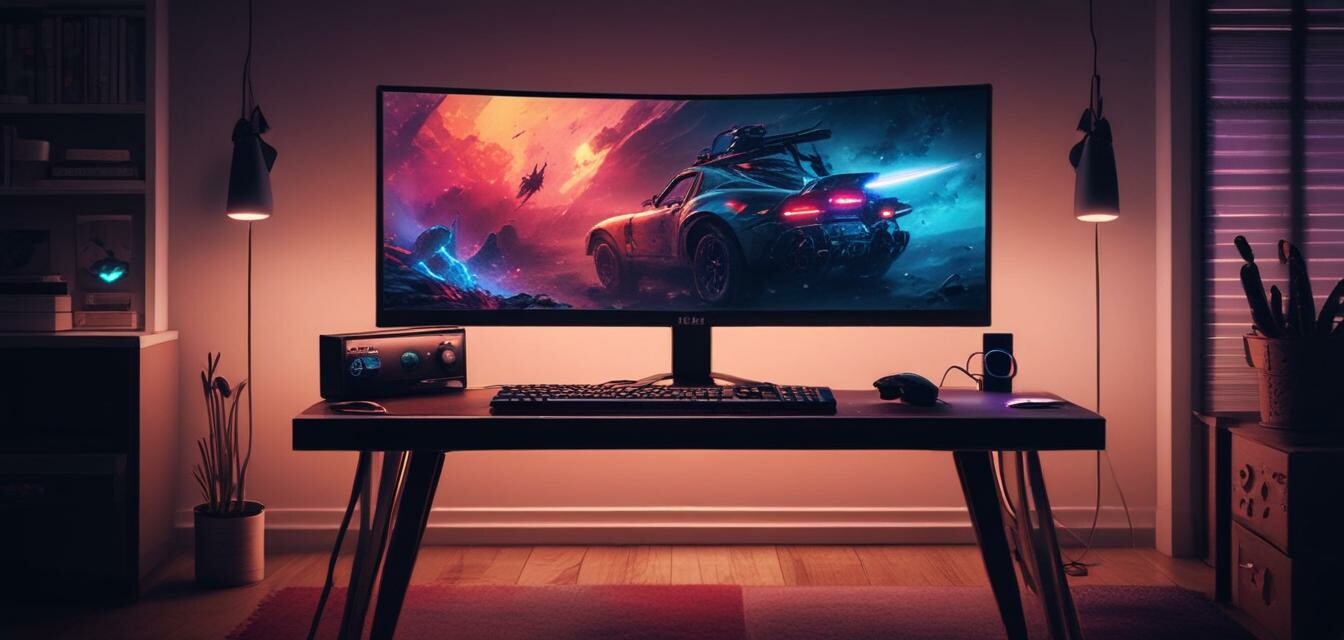
OLED Monitor Set-Up: A Complete Guide
Setting up your OLED gaming monitor correctly is essential to maximize your gaming experience. This guide will help you understand the necessary steps for optimal positioning, hardware configuration, and software adjustments to achieve stunning visuals and top-notch performance.
- Positioning is key for an immersive experience.
- Understand the hardware requirements for your gaming setup.
- Optimize software settings for the best picture quality.
- Regular adjustments can enhance longevity and performance.
- Explore our Buying Guides for more insights.
1. Understanding OLED Technology
OLED (Organic Light Emitting Diodes) technology provides superior image quality with deep blacks and vibrant colors. This section highlights the key benefits of using an OLED gaming monitor:
- Improved Contrast: Each pixel emits its own light, enhancing the contrast ratio.
- Wide Color Gamut: OLED monitors offer a wider spectrum of colors for a more immersive experience.
- Faster Response Time: Boasting quicker pixel switching, OLED displays reduce motion blur in fast-paced games.
2. Positioning Your OLED Monitor
Proper positioning of your OLED monitor is crucial for the best viewing experience. Here are essential factors to consider:
| Factor | Recommendation |
|---|---|
| Distance from Eyes | At least 2 feet away for optimal clarity. |
| Height | Align the top of the monitor screen with your eye level. |
| Angle | Position at a 90-degree angle to avoid glare. |
2.1 Viewing Angles
OLED monitors allow for wider viewing angles compared to LCDs, making it easier to see from different positions. However, to maximize the benefits:
- Ensure a direct view from your gaming chair.
- Avoid extreme angles that could distort colors.
3. Hardware Setup
Getting the hardware right is essential for a seamless gaming experience. Here’s how to set up your OLED gaming monitor with other components:
- Choose the right cables: Use HDMI 2.1 for high-refresh rate gaming.
- Connect to a compatible GPU: Ensure your graphics card supports OLED and high resolutions.
- Power supply: Confirm that your monitor is compatible with your existing power supply.
3.1 Connecting Multiple Devices
If you're planning to connect multiple devices like consoles and PCs, consider using a switcher or an A/V receiver.
4. Software Adjustments
Once the hardware is all set up, it's time to tweak the software settings for optimal performance:
- Display Settings: Adjust resolution to match the monitor's native settings.
- Color Calibration: Use calibration tools to set the contrast and brightness.
- Refresh Rate: Set the refresh rate to the maximum supported by your monitor.
4.1 Game Mode Settings
Many OLED monitors come with specific gaming modes. Make sure to:
- Enable Game Mode for reduced input lag.
- Explore any additional options offered through the monitor's on-screen menu.
5. Maintenance for Longevity
Regular maintenance can prolong the life of your OLED monitor. Here are a few tips:
- Adjust brightness and contrast settings periodically.
- Prevent screen burn-in by using screen savers and periodic video content.
- Keep the monitor firmware updated for performance enhancements.
Pros
- Exceptional picture quality with deep blacks and bright colors.
- Fast response times for dynamic gaming.
- Wider viewing angles compared to traditional displays.
Cons
- Possible risk of burn-in if static images are displayed for long periods.
- Potentially higher price than traditional LCD monitors.
Conclusion
Setting up your OLED gaming monitor correctly is a blend of art and science. By following the guidelines outlined in this guide, you can enhance your gaming experience significantly. Whether you're aiming for stunning visuals or smooth gameplay, every adjustment counts!
For further exploration on finding the perfect monitor for your style, check out our 4K OLED Gaming Monitors or Budget-Friendly OLED Gaming Monitors categories.